which insect pollinates the tomato plant?
Vinh
15 years ago
Featured Answer
Comments (13)
queuetue
15 years agorhizo_1 (North AL) zone 7
15 years agoRelated Discussions
Tomato pollination question
Comments (5)Garbird: Your heirloom is "dehybridized," and as such, will render seeds that are true to the strain, if not X-pollinated. So we agree on that. Your intuitive comments are 100% correct. Absolutely those hybrid tomatoes can provide pollen that might get to your heirlooms, and that would ruin your seed stock...but would have no effect on the taste or nature of the tomatoes coming from your heirloom vine. Only the SEEDS are affected. (Just thought I'd throw that in, as the misconception has been voiced before.) And, given your astute intuition, you should see the logic of this. While the pollination gets the fruit to set and develop, the genetic specifics are relevant only to the resulting seeds, not flesh of the fruit. Of course, the fruit of the subsequent generation would be entirely affected by the genetic nature of the plant that produces the fruit. But, back to your original inquiry... As your plants develop, I suggest you closely examine the flowers of your plants. You should notice that your hybrids typically have flowers where the male part (anthers) completely envelope the female part (pistil and stigma). This virtually assures self-pollination, and pollination at a high rate. Hence the prolific yield of the typical Early Girl or Better Boy. The heirloom, ironically, has a long female part (pistil) which tends to encourage cross-pollination, so anatomy is working against your desire to favor self-pollination. (I suppose the term "OP" (Open Pollination) comes from this anatomical aspect, but I am only surmising that...no confirmation from authoritative writings.) So, once again, common sense should be considered. And, as expected, heirlooms tend to have low yields...in my opinion, because the anthers of these flowers are often unable to "get to" the stigmas, which ride high and above the anthers. So I manually pollinate them. But I never collect my own seeds this way. I just want to eat the fruit! Again, trust your senses. If pollen from a different tomato variety might pollinate your heirloom, then the seed is junk. And I suppose that pollen from a different plant that is the SAME varietal should be OK...but I have never read that anywhere. I suppose I reserve the right to trust my common sense, too....See MoreHeirloom Tomato Cross-pollination?
Comments (5)Heirloom tomatoes have perfect flowers (both male and female pats) and self-pollinate most of the time, without any special precautions. If you want to be ABSOLUTELY positive that they do not cross pollinate, then bag the blossoms before they open and leave them bagged until the fruit forms. Then you would need to somehow mark that fruit when you took the bag off so that you would remember which one to save seeds from. I saved seeds from 3 different varities last year and do not think that I had cross pollination problems (the PL came up PL, so I know those are pure). This year I have about 40 varities though..... Check out the FAQ over on the tomato forum for lots more useful info on saving seeds and cross pollination...See MoreTomatoes and cross-pollination?
Comments (16)Rex, With all due respect, it doesn't matter if you think that zucchini, which is Cucurbita pepo, will cross with Butternut squash, which is Cucurbita moschata, because it will not. I won't even address your zedonk example because that involves animal genetics and we're discussing plant genetics. You can't mix apples with oranges. You have to understand the Cucurbita genus a little better, which contains 12 or 13 different species or species groups, of which 5 OR 6 are domesticated species grown for food but of those, only 4 species of squash are grown by most people. Here is the key: each Cucurbita squash species (moschata, pepo, argyrosperma, and maxima) crosses with other squash within its species (and each species has dozens of individual varieties) but the species do not cross with one another, with one notable exception that I'll explain in a minute. So, people who save seed can indeed grow one pepo variety, one maxima variety, and then EITHER one moschata variety OR one argyrosperma variety with no fear of them crossing. With the C. moschata and C. argyrosperma combination, you possibly can have cross pollination, but only if the C. argyrosperma is the female and the C. moschata is the male. You don't get the reciprocal cross. With these crosses, there is little research about how/if they do or do not cross in home gardens because the research has been done with wild squash and Mexican cushaw types, and most people don't grow those types in home gardens. People who have cross-pollination issues usually have them because they don't understand which varieties belong to which species. Each species has its own specific stem, flower, seed, and leaf characteristics. Here's a very brief description of what they are. Cucurbita maximas have very long vines, very huge and hairy leaves, and somewhat soft, round, spongy, hairy stems. They produce seeds that are either white or tan with either cream-colored or tan margins and a thin cellophane type seed coating. The maxima species includes all varieties of Banana, Buttercup, Hubbard,, winter Marrow and Turban types. In her book, SEED TO SEED, which is the definitive book for folks interested in seed-saving, Suzanne Ashworth lists several hundred maxima varieties. Cucubita argyrosperma (formerly known as C. mixta) have spreading vines and large, hairy leaves. Each fruit's stem is hard, hairy and slightly angular. At the point where the fruit attaches to the stem, the stem flares out only very slightly. The leaves of C. argyrospermas are lighter in color that those of C.moschata, they have rounded leaf tips and few if any indentations along their sides. Their seeds are either tan or white with a very pale martin. The seeds have a thin cellophane coating and cracks in the skin coat on the seeds' flat side. C. argyrosperma includes most but not all varieties of Cushaw squash (excluding golden cushaw, orange cushaw and orange-striped cushaw which are C. moschata), and many other squash including native types like Gila Cliff Dweller, Hopi, Cochita Pueblo, Hopi Taos, and Hopi Teardrop. In her book, Suzanne Ashworth lists several dozen varieties from this group. C. moschatas have spreading vines and large, hairy leaves. With these, the fruit's stems out very noticeably at the point where it attaches to the fruit. The stem is very hard, somewhat angular and hairy. C. moschata's leaves are a bit darker than those of C. argyrosperma but they have pointed, not rounded, leaf tips and slight indentations along their sides. C. moschata seeds are small and oblong in shape, beige in color and have a darker beige margin. Within this species, you have all varieties of butternut squash, all varieties of of Cheese squash or Cheese pumpkins, and many others. Suzanne Ashworth lists probably a couple hundred from this species in her book. C. pepo plants have very prickly leaves and very prickly stems, and they are especially prickly by the time they mature. WIth these, the fruits stems are very hard at maturity and have five sharply angular sides. They produce cream-colored seeds that have white margins. This is a huge family that includes all varieties of Acorn squash, all varieties of Cocozelle, some but not all pumpkins, all crookneck squash, all scallop squash, all vegetable marrow squash, all zuchinni squash, and more. Suzanne Ashworth lists many hundreds of varieties that belong to this group and that includes many decorative striped and warted gourds. All squash varieties are outbreeding and are insect-pollinated plants. There techically are six species: argyrosperma, maxima, moschata and pepo as described above, and also C. ficifolia, a species grown in Mexico and used in candy-making, and C. foetidissima, a wild gourd commonly called Buffalo gourd. The name foetidissima is a clue that their leaves have an unpleasant odor. The fruit are used for oil (from their seed) but are not eaten. For seed-saving to be done properly to preserve the characteristics of each variety, you need to ensure a greater amount of genetic diversity by choosing your male and female blossoms from different plants of the same variety. If you save from a very small population of plants, over time you will have lower and lower quality of plants and fruit as you lose genetic diversity. I don't rely on anything I find on random websites on the internet because there is a lot of misinformation out there and often the info given is too general. I rely on books written by acknowledged experts and on info from university or agricultural extension websites. If you are truly interested in saving seed, you need to buy or borrow a copy of Suzanne Ashworth's book "Seed To Seed: Seed Saving and Growing Techniques for Vegetable Gardeners" which is the definitive book on the subject. If you are interested in the squash family, do yourself a favor and read Amy Goldman's outstanding book "The Compleat Squash: A Passionate Grower's Guide to Pumpkins, Squashes and Gourds". To save seeds successfully, you have to have a broad-based knowledge of the types of plants you are growing and a thorough knowledge of seed-saving and the techniques needed to do it properly. You need to know not only how to do it but also why it must be done a certain way. Simply hand-pollinating and bagging a few blossoms is a minimalist approach that can give you seeds that run out if you aren't careful. Running out means that you lose genetic diversity with each generation you save because you are saving too few seeds from too small of a population. What you consider simple and efficient leads to weaker and weaker seeds and plants over time and isn't recommended. I'm not saying that to be mean but just to emphasize that there's a better way to do it. Dawn...See Moreinsect eggs underside of my tomato plant
Comments (6)I've got some eggs on the underside of a tomato leaf. They look salmon colored to me, but that may be because they're against a green leaf. They have a little dot in the center that is darker in color than the rest. I found a picture that looks similar except the color is blue-green. Here is a link that might be useful: Pic of blue-green eggs...See MoreKimmsr
15 years agoVinh
15 years agoKimmsr
15 years agowayne_5 zone 6a Central Indiana
15 years agocurdog007
8 years agobusysol
8 years agogardengal48 (PNW Z8/9)
8 years agodirtguy50 SW MO z6a
8 years agobluegoat_gw
8 years agomaxjohnson
8 years ago
Related Stories
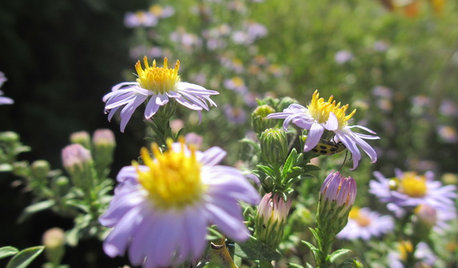
NATIVE PLANTSPlant These Fall-Flowering Natives in Early Summer for Pollinator Love
These 3 groups of plants will support masses of beneficial insects come autumn
Full Story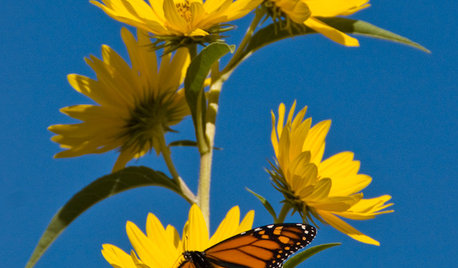
GARDENING GUIDESGreat Design Plant: Helianthus Maximiliani Attracts Beneficial Insects
Maximilian sunflower’s striking yellow flowers light up the fall landscape and attract pollinators and beneficial insects at a crucial time
Full Story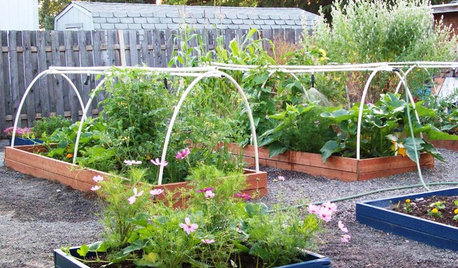
BENEFICIAL INSECTSAttract Pollinators for a Productive Edible Garden
You can lure bees, butterflies and birds into your yard with the right flowers and nesting spots
Full Story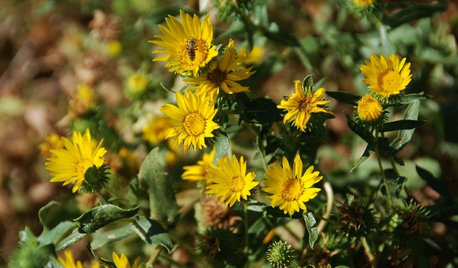
GARDENING GUIDESGreat Design Plant: California Grindelia Species for Beneficial Insects
Use gum plants as reliable summer bloomers and to provide habitat for California native bees, butterflies and other beneficial insects
Full Story0
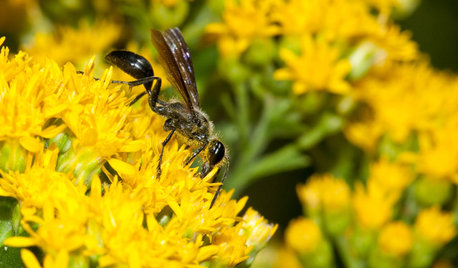
GARDENING GUIDESMeet the Grass-Carrying Wasp, a Gentle Pollinator of Summer Flowers
These fascinating insects nest in wood cavities and hollow plant stems
Full Story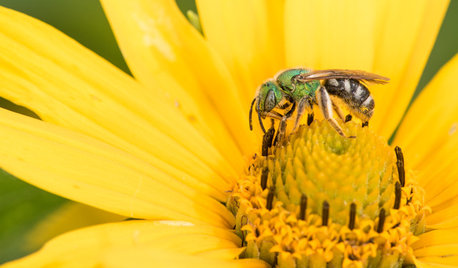
GARDENING GUIDESGreat Design Plant: Heliopsis Helianthoides, a Pollinator Favorite
Plant smooth oxeye in eastern U.S. gardens for its bright, sunny flowers and upright form
Full Story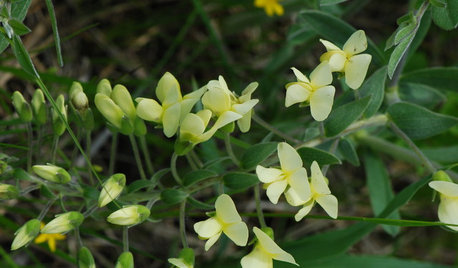
FLOWERS AND PLANTSPlant Baptisia Bracteata for Blooms Pollinators Will Love
Longbract wild indigo is great in dry soil, and its spring flowers attract butterflies and bumblebees
Full Story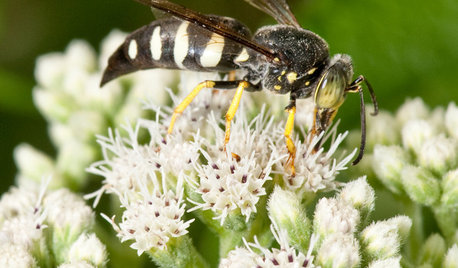
GARDENING GUIDESSand Wasps Keep True Bugs in Check and Help Pollinate Summer Flowers
Look for these solitary wasps nesting in sandy sites and foraging on flowers in July and August
Full Story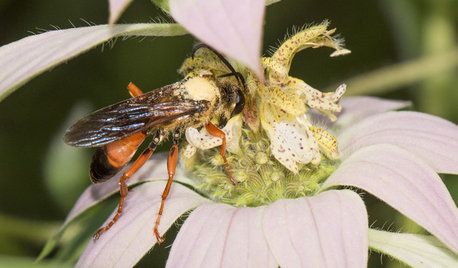
GARDENING GUIDESGreat Golden Digger Wasp: A Beneficial Flower-Visiting Insect
Introducing the great golden digger wasp, a colorful pollinator that also hunts foliage-eating insects
Full Story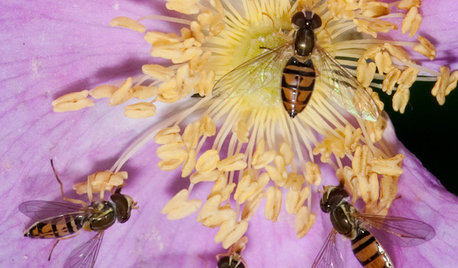
GARDENING GUIDESThis Fly Is One of the Most Beneficial Insects Around
Meet the syrphid fly, a colorful pollinator that also beats chemicals for controlling aphids and other garden pests
Full Story


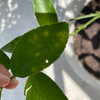
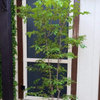
floral_uk z.8/9 SW UK